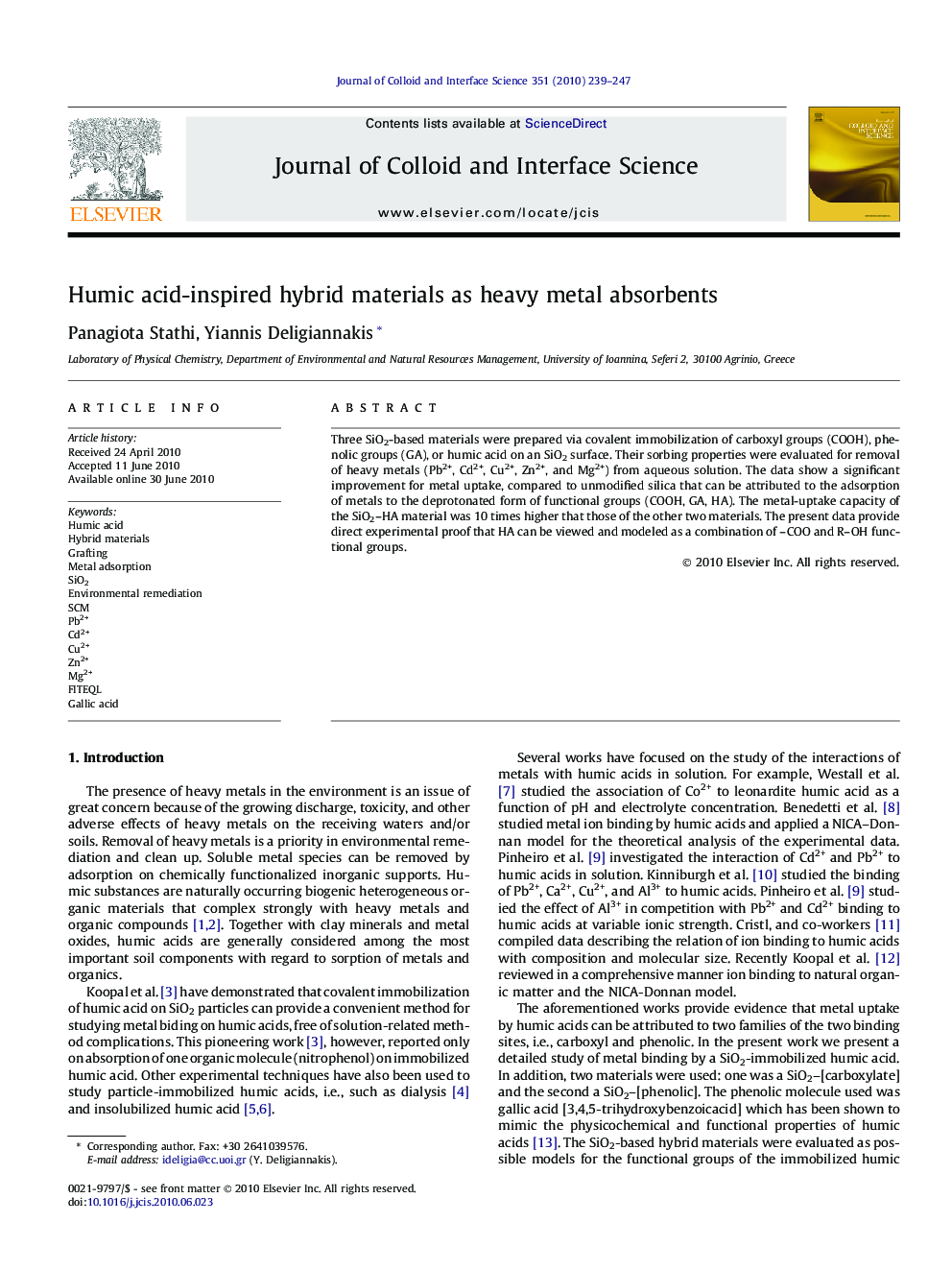| Article ID | Journal | Published Year | Pages | File Type |
|---|---|---|---|---|
| 609043 | Journal of Colloid and Interface Science | 2010 | 9 Pages |
Three SiO2-based materials were prepared via covalent immobilization of carboxyl groups (COOH), phenolic groups (GA), or humic acid on an SiO2 surface. Their sorbing properties were evaluated for removal of heavy metals (Pb2+, Cd2+, Cu2+, Zn2+, and Mg2+) from aqueous solution. The data show a significant improvement for metal uptake, compared to unmodified silica that can be attributed to the adsorption of metals to the deprotonated form of functional groups (COOH, GA, HA). The metal-uptake capacity of the SiO2–HA material was 10 times higher that those of the other two materials. The present data provide direct experimental proof that HA can be viewed and modeled as a combination of –COO and R–OH functional groups.
Graphical abstractHybrid SiO2–[COOH] or SiO2–[Phenolic] materials show log K values for metal-binding, comparable with those of SiO2–HA materials.Figure optionsDownload full-size imageDownload high-quality image (142 K)Download as PowerPoint slideResearch highlights► SiO2-based materials were prepared with covalent immobilization of carboxyl groups (COOH), phenolic groups (GA) or Humic Acid on SiO2 surface. ► All three materials show significant metal-uptake capacities. ► SiO2–COOH and SiO2–GA are a good models for the adsorption properties of metals by the HA–COOH and phenolic groups of HA respectively.
